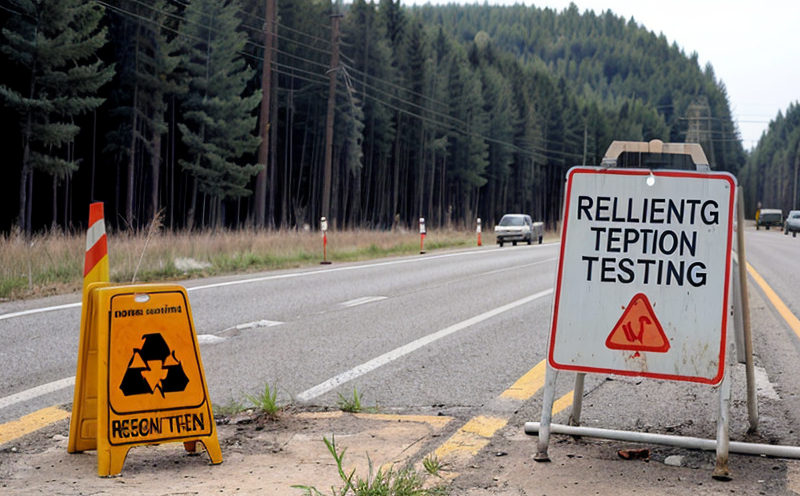ASTM D7296 Monitoring of Radon Exhalation from Soils
The ASTM D7296 standard provides a protocol for determining radon exhalation rates from soils, which is critical for understanding the potential health risks associated with radon gas emissions. This service ensures compliance with regulatory requirements and enhances safety in residential, commercial, and industrial environments.
Radon (Rn-222) is a colorless, odorless, radioactive noble gas that can seep into buildings through cracks in floors, walls, sumps, or drains. It originates from the natural decay of uranium in soil, rock, and water. Prolonged exposure to high levels of radon has been linked to lung cancer, making it essential for organizations to monitor and control radon emissions effectively.
The ASTM D7296 method uses a dynamic flux chamber system to measure the rate at which radon gas escapes from soil surfaces into the atmosphere. This approach ensures accurate measurements under controlled conditions, providing reliable data for decision-making processes related to environmental safety and compliance.
This service is particularly important in regions where high levels of uranium or thorium are found naturally in the soil. By implementing ASTM D7296 monitoring, facilities can identify areas with elevated radon concentrations early on, allowing them to take proactive measures such as sealing cracks, improving ventilation systems, or installing sub-slab depressurization.
Accurate radon measurement is vital for ensuring compliance with local and national regulations governing indoor air quality. Many countries have established guidelines that set permissible limits for radon concentration in enclosed spaces like homes and offices. Regular monitoring helps organizations maintain these standards while protecting public health.
The ASTM D7296 procedure involves several key steps, including preparing the soil sample correctly before placing it into a specially designed chamber. After setting up the equipment according to manufacturer instructions, researchers measure the amount of radon released over time using sensitive detectors capable of detecting even trace amounts of this gas.
| Step | Action |
|---|---|
| 1 | Select a representative soil sample from the area to be tested |
| 2 | Clean and prepare the selected site according to ASTM D7296 guidelines |
| 3 | Install the dynamic flux chamber apparatus onto the prepared surface |
| 4 | Allow sufficient time for equilibrium between the soil and the air inside the chamber |
| 5 | Measure radon concentration within the chamber using appropriate instrumentation |
| 6 | Analyze data collected during testing to determine radon exhalation rate |
Once completed, this service provides detailed reports outlining all aspects of the test procedure along with calculated results. These documents serve as valuable resources for stakeholders involved in environmental management and risk assessment.
In conclusion, ASTM D7296 monitoring plays a crucial role in safeguarding human health by providing accurate information about radon emissions from soils. By adhering to this standard, organizations can ensure they meet regulatory expectations while also promoting safer working environments.
Why It Matters
Radiation and nuclear testing play a significant role in various sectors including healthcare, energy production, defense, and research. Within these industries, ensuring the safety of personnel and surrounding communities is paramount. One critical aspect of this responsibility involves monitoring radon exhalation from soils due to its direct impact on public health.
Radon gas, being a carcinogen known to cause lung cancer when inhaled over extended periods, poses significant risks if not managed properly. The Environmental Protection Agency (EPA) estimates that approximately 21,000 deaths annually result from radon exposure worldwide. Therefore, implementing robust monitoring protocols like ASTM D7296 becomes indispensable.
By utilizing this standard, facilities can detect and mitigate potential hazards before they escalate into serious issues. For instance, construction sites located near areas rich in uranium deposits must conduct thorough tests to avoid unintended contamination of newly built structures. Similarly, agricultural lands could benefit from such assessments if there's suspicion that nearby industrial activities might influence soil composition adversely.
Moreover, adherence to ASTM D7296 ensures consistency across different regions and organizations regarding how radon exhalation rates are measured. This uniformity facilitates comparison between datasets generated by multiple parties involved in similar projects or studies, thereby enhancing overall accuracy and reliability of findings.
In summary, effective monitoring through ASTM D7296 contributes significantly towards maintaining safe working conditions and protecting human health against the adverse effects of radon exposure.
Scope and Methodology
- Determining radon exhalation rates from soil surfaces using a dynamic flux chamber system
- Preparation of representative soil samples according to ASTM D7296 specifications
- Installation of the flux chamber apparatus on prepared sites
- Equilibration period allowing sufficient time for gas exchange between soil and air within the chamber
- Measurement of radon concentration inside the chamber using sensitive detectors
- Data analysis to calculate radon exhalation rates
- Compliance with all relevant international standards such as ISO 16000 series
The methodology described herein aligns closely with ASTM D7296, ensuring accurate and reliable measurement of radon exhalation from soil. This approach not only meets regulatory requirements but also supports informed decision-making processes related to environmental protection.





